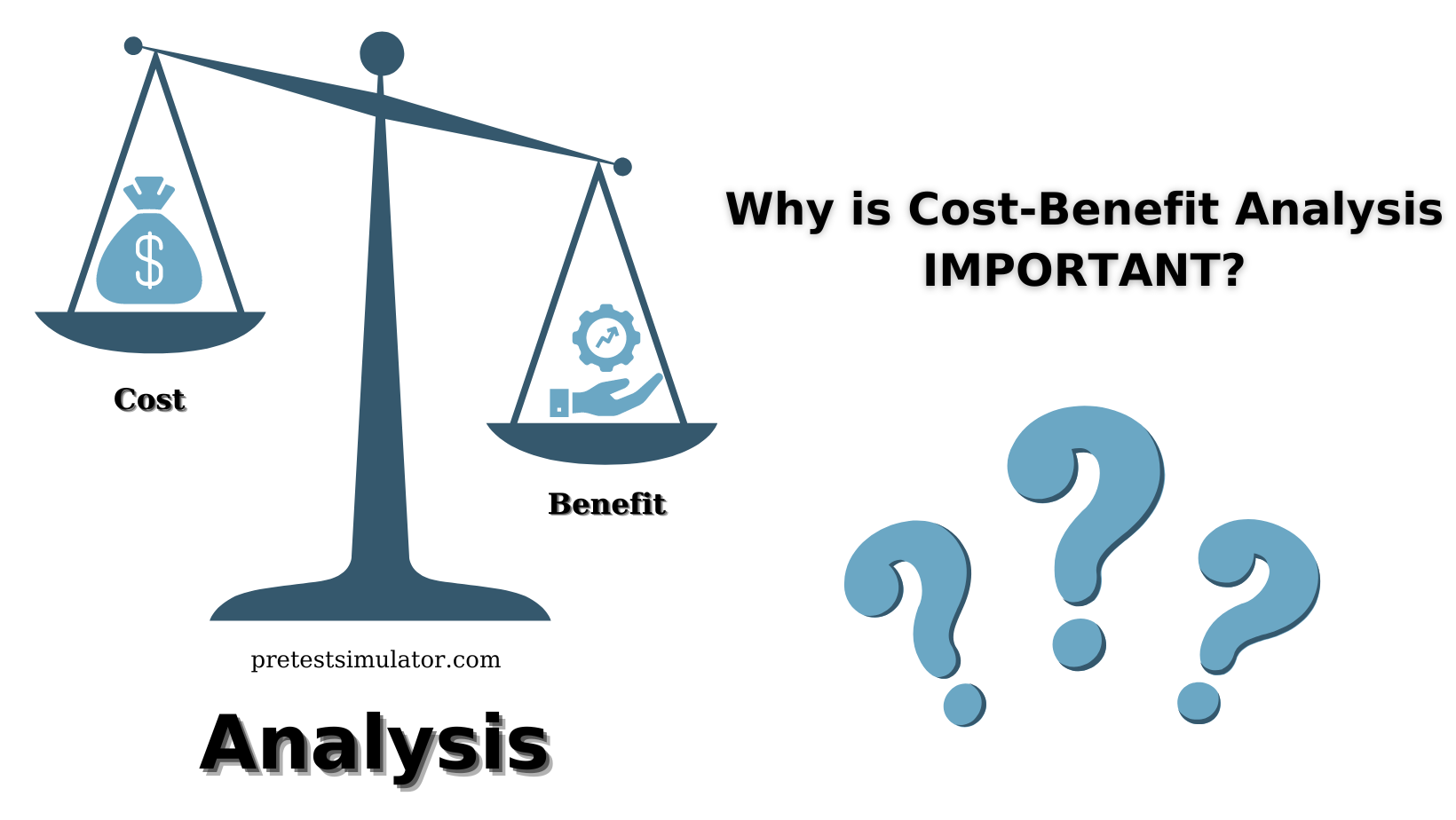What is Cost-Benefit Analysis

DEFINITION OF COST-BENEFIT ANALYSIS
Cost-benefit analysis is a process of evaluating the potential costs and benefits of a decision or project.
It involves comparing the expected costs of a particular action or investment with the expected benefits that will result from it.
The goal of cost-benefit analysis is to determine whether the benefits of a decision or project outweigh its costs and whether it is worth pursuing.
WHAT DOES COST-BENEFIT ANALYSIS INCLUDE?
Cost-benefit analysis typically includes a comprehensive evaluation of all the costs and benefits associated with a particular decision or project.
It may include direct costs such as labor, materials, equipment and indirect costs such as lost productivity or environmental impacts.
Benefits may include increased revenue, improved efficiency, or other positive outcomes.
The analysis may also consider intangible factors such as social or environmental benefits.
WHY DO WE HAVE TO USE COST-BENEFIT ANALYSIS?
Cost-benefit analysis is a valuable tool for decision-making because it helps to ensure that resources are allocated efficiently and effectively.
By evaluating the potential costs and benefits of a particular decision or project, decision-makers can determine whether it is worth pursuing and whether it is likely to generate a positive return on investment.
Prevent wasteful spending and ensure that resources are used in the most productive way possible.
Identify potential risks and uncertainties associated with a particular decision or project, which can help decision-makers to develop strategies to mitigate those risks.
HOW TO USE COST-BENEFIT ANALYSIS?
To use cost-benefits analysis, you typically follow these steps:
- Identify the decision or project you want to evaluate: Determine the specific decision or project that you want to evaluate using cost-benefit analysis.
- Identify the costs and benefits: Identify all the costs and benefits associated with the decision or project. It may include direct costs such as labor and materials and indirect costs such as lost productivity or environmental impacts. Benefits may include increased revenue, improved efficiency, or other positive outcomes.
- Assign a monetary value to each cost and benefit: Assign a monetary value to each cost and benefit so that they can be compared on a common basis.
- Calculate the net present value: Calculate the net present value of the costs and benefits, taking into account the time value of money.
- Compare the costs and benefits: Compare the total costs and benefits to determine whether the benefits outweigh the costs and whether the decision or project is worth pursuing.
- Consider sensitivity analysis: Consider conducting sensitivity analysis to evaluate how changes in assumptions or variables might affect the results of the analysis.
WHAT ARE THE BENEFITS AND DRAWBACKS OF COST-BENEFIT ANALYSIS?
BENEFITS of cost-benefit analysis:
- Objective decision-making: CBA provides a systematic and objective framework for evaluating the costs and benefits of different alternatives. It helps decision-makers to make informed and rational choices based on facts and data, rather than emotions or personal biases.
- Transparency and accountability: CBA makes the decision-making process transparent by identifying and quantifying the costs and benefits of a project or policy. It helps stakeholders to understand the rationale behind the decision and hold decision-makers accountable for their actions.
- Efficient allocation of resources: CBA helps to ensure that resources are allocated efficiently by comparing the costs and benefits of different alternatives. It helps to identify the most cost-effective option and avoids wasting resources on projects with low social and economic returns.
- Improved project design: CBA helps identify the potential costs and benefits of a project or policy, which can inform the design of the project to maximize its benefits and minimize its costs.
DRAWBACKS of cost-benefit analysis:
- Difficulty quantifying costs and benefits: It can be challenging to quantify some costs and benefits, especially those that are intangible or difficult to measure. For example, it may be difficult to quantify the social or environmental impacts of a project, which can lead to an underestimation of its true costs or benefits.
- Subjectivity and bias: CBA involves making assumptions about the future, which can be subjective and biased. These assumptions can impact the results of the analysis and the decisions that are made based on them.
- Ethical concerns: CBA may not take into account ethical concerns or distributional impacts, such as the impact on vulnerable or marginalized groups. It can lead to decisions that benefit the majority at the expense of the minority.
- Limited scope: CBA only considers costs and benefits that can be measured in monetary terms. It may not take into account broader social and environmental impacts that are difficult to measure or monetize.
Overall, while CBA can be a useful tool for decision-making, it is important to recognize its limitations and potential biases.
Decision-makers should use CBA in conjunction with other decision-making tools and consider the broader impacts of their decisions on society and the environment.